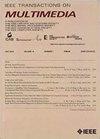多媒体数据与安全
IF 2.3
4区 计算机科学
Q2 COMPUTER SCIENCE, HARDWARE & ARCHITECTURE
引用次数: 0
摘要
1 主动方法使用源信息,如水印和数字签名。例如,Bahirat 等人2 提出了一种基于水印的框架,用于对红、绿、蓝(RGB)和三维点云中的篡改进行认证和定位。水印方法计算成本高,无法应用于未经处理的原始数据。被动方法或盲法取证3 适用于测试无法获得原始数据或源信息的多媒体数据。4 然而,正如 Bayar 和 Stamm 所指出的,基于深度学习的方法需要平衡假阳性和假阴性。除了需要检测多媒体数据中的篡改,还需要定位(即识别发生篡改的区域)。本文章由计算机程序翻译,如有差异,请以英文原文为准。
Multimedia Data and Security
The detection of manipulation of multimedia data can be categorized as active and passive approaches.1 The active approaches use source information, such as watermarks and digital signatures. For instance, Bahirat et al.2 proposed a watermarking-based framework for authentication and localization of tampering in red, green, blue (RGB) and the 3-D point cloud. The watermarking methods, which are computationally expensive, cannot be applied on raw unprocessed data. Passive approaches, or blind forensics,3 are intended for testing multimedia data where the original or source information is not available. Deep-learning-based tampering detection avoids the need to perform various forensic tests to detect whether multimedia data have been manipulated or not.4 However, deep-learning-based methodologies need to balance false positives and negatives, as pointed out by Bayar and Stamm.4 Apart from the need for detecting manipulations in multimedia data, there is also a need for localizing (i.e., identifying the region) where the manipulation occurred.
求助全文
通过发布文献求助,成功后即可免费获取论文全文。
去求助
来源期刊

IEEE MultiMedia
工程技术-计算机:理论方法
CiteScore
6.40
自引率
3.10%
发文量
59
审稿时长
>12 weeks
期刊介绍:
The magazine contains technical information covering a broad range of issues in multimedia systems and applications. Articles discuss research as well as advanced practice in hardware/software and are expected to span the range from theory to working systems. Especially encouraged are papers discussing experiences with new or advanced systems and subsystems. To avoid unnecessary overlap with existing publications, acceptable papers must have a significant focus on aspects unique to multimedia systems and applications. These aspects are likely to be related to the special needs of multimedia information compared to other electronic data, for example, the size requirements of digital media and the importance of time in the representation of such media. The following list is not exhaustive, but is representative of the topics that are covered: Hardware and software for media compression, coding & processing; Media representations & standards for storage, editing, interchange, transmission & presentation; Hardware platforms supporting multimedia applications; Operating systems suitable for multimedia applications; Storage devices & technologies for multimedia information; Network technologies, protocols, architectures & delivery techniques intended for multimedia; Synchronization issues; Multimedia databases; Formalisms for multimedia information systems & applications; Programming paradigms & languages for multimedia; Multimedia user interfaces; Media creation integration editing & management; Creation & modification of multimedia applications.
 求助内容:
求助内容: 应助结果提醒方式:
应助结果提醒方式:


